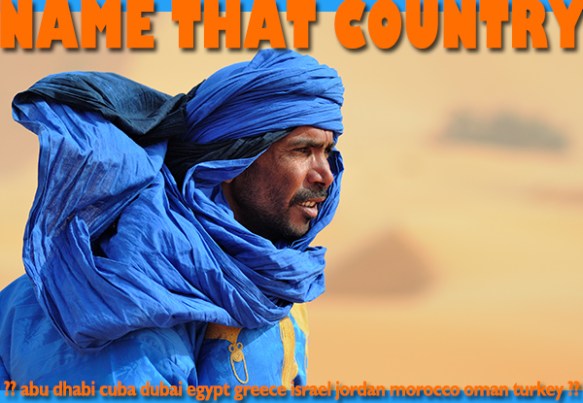
The artificial lake above is supplied by the wall of Atlas Mountains in the background and has been watering the surrounding groves of palm, olive and fruit trees, known as the Menara Gardens, since the 12 century. The elegant 19th-century pavilion is used for picnicking and gazing out over the lake and gardens. A shady, tranquil sanctuary from the summertime swelter and crush of the Red City, the gardens attract tourists and locals alike.
Can you name that country?
See below for answers.









